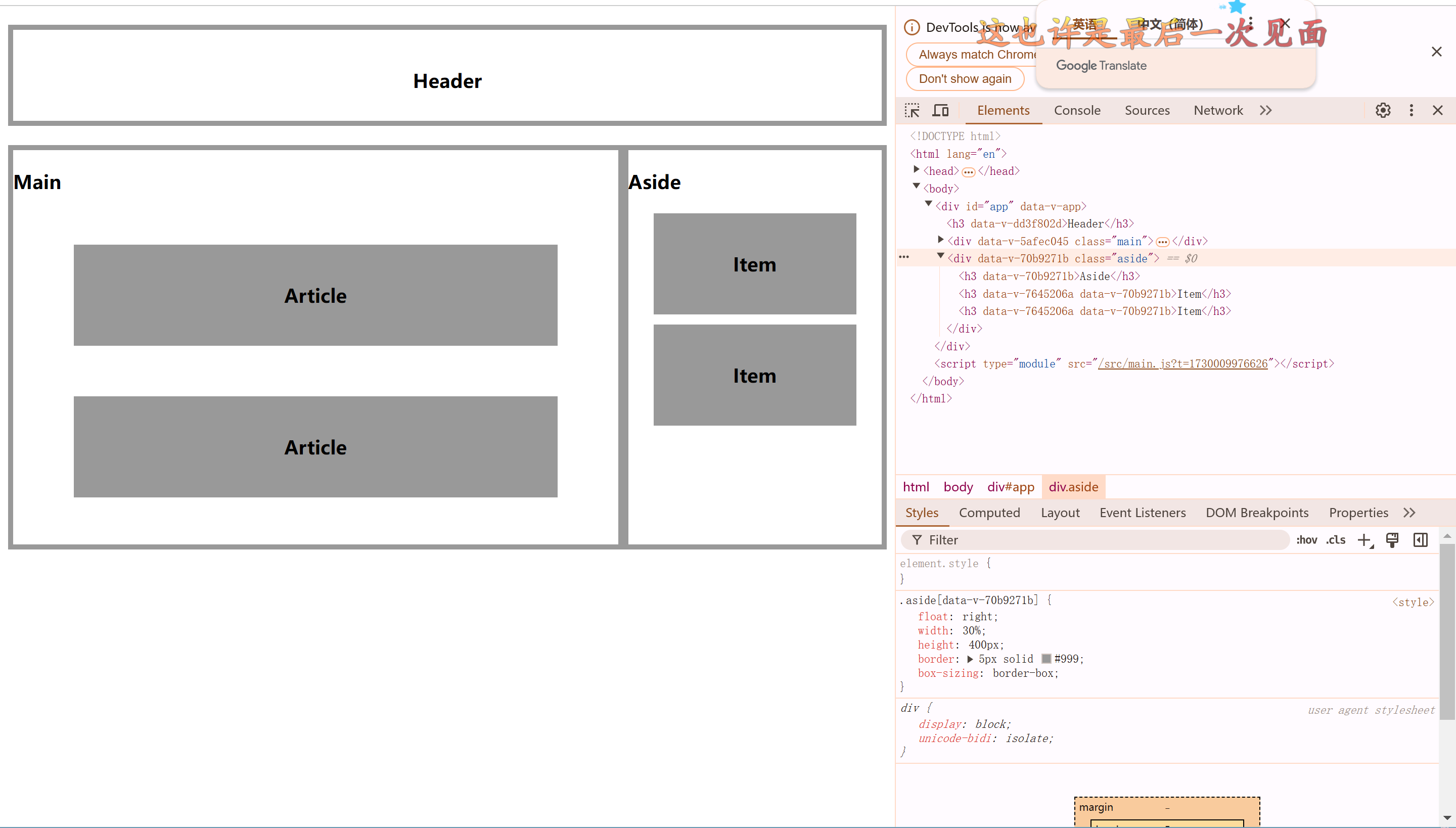模板引用(获取DOM 操作)
虽然Vue的声明性渲染模型为你抽象了大部分对DOM的直接操作,但在某些情况下,我们仍然需要直接访问底层DOM元素。要实现这一点,我们可以使用特殊的refattribute。
挂载结束后引用都会被暴露在this.$refs之上。
<script>/*** 内容改变:{{模板语法}}* 属性改变:v-bind* 事件改变:v-on*/export default {data() {return {content: "内容"}},methods: {getElementHandle() {console.log(this.$refs.container);console.log(this.$refs.username.value);}}}
</script><template><div ref="container" class="container">{{ content }}</div><input type="text" ref="username"><button @click="getElementHandle">获取元素</button>
</template>
组件组成
组件最大的优势就是可复用性
当使用构建步骤时,我们一般会将Vue组件定义在一个单独的.vue文件中,这被叫做单文件组件(简称SFC)
组件组成结构
<script>
export default {data() {return {message: "基础组件组成"}}
}
</script><template><div class="container">{{ message }}</div>
</template><!-- scoped 限定样式只在当前组件生效 -->
<style scoped> .container {width: 100%;height: 100%;color: red;}
</style>
组件引用
<script>
//1.引入组件
import Mycomponent from './components/Mycomponent.vue'
// 2.注入组件
export default {components: {Mycomponent}
}
</script><template><!-- 3.使用组件 --><Mycomponent />
</template><style></style>
setup可以省略注入组件步骤
组件的嵌套关系

组件允许我们将UI划分为独立的、可重用的部分,并且可以对每个部分进行单独的思考。在实际应用中,组件常常被组织成层层嵌套的树状结构。
这和我们嵌套HTML元素的方式类似,Vue实现了自己的组件模型,使我们可以在每个组件内封装自定义内容与逻辑。
创建组件及引用关系
App.vue
<script>import Header from './pages/Header.vue';import Main from './pages/Main.vue';import Aside from './pages/Aside.vue';export default {name: 'App',components: {Header,Main,Aside}}
</script><template><Header /><Main /><Aside />
</template><style></style>
Header.vue
<template><h3>Header</h3>
</template><style scoped>
h3 {width: 100%;height: 100px;border: 5px solid #999;text-align: center;line-height: 100px;box-sizing: border-box;
}
</style>
Main.vue
<script>
import Artice from './Artice.vue';
export default {components: {Artice}
}
</script><template><div class="main"><h3>Main</h3><Artice /><Artice /></div>
</template><style scoped>
.main {float: left;width: 70%;height: 400px;border: 5px solid #999;box-sizing: border-box;
}
</style>
Aside.vue
<script>
import item from './item.vue';
export default {components: {item}
}
</script><template><div class="aside"><h3>Aside</h3><item /><item /></div>
</template><style scoped>
.aside {float: right;width: 30%;height: 400px;border: 5px solid #999;box-sizing: border-box;
}
</style>
Article.vue
<script>
export default {}
</script><template><h3>Article</h3>
</template><style scoped>
h3 {width: 80%;margin: 0 auto;text-align: center;line-height: 100px;box-sizing: border-box;margin-top: 50px;background: #999;
}
</style>
Item.vue
<template><h3>Item</h3>
</template><style scoped>
h3 {width: 80%;margin: 0 auto;text-align: center;line-height: 100px;box-sizing: border-box;margin-top: 10px;background: #999;
}
</style>
效果展示

组件注册方式
一个Vue组件在使用前需要先被“注册”,这样Vue才能在渲染模板时找到其对应的实现。组件注册有两种方式:
- 全局注册
- 局部注册
全局注册
main.js
import { createApp } from 'vue'
import App from './App.vue'
import Header from './pages/Header.vue'const app = createApp(App)
//在这里引入全局样式
app.component('Header', Header)
app.mount('#app')
App.vue
<script>// import Header from './pages/Header.vue';import Main from './pages/Main.vue';import Aside from './pages/Aside.vue';export default {name: 'App',components: {// Header,Main,Aside}}
</script><template><Header /><Main /><Aside />
</template><style></style>
无需在其他Vue文件下注册引入,可以直接使用
坏处
- 全局注册,但并没有被使用的组件无法在生产打包时被自动移除(也叫"tree-shaking")。如果你全局注册了一个组件,即使它并没有被实际使用,它仍然会出现在打包后的JS文件中。
- 全局注册在大型项目中使项目的依赖关系变得不那么明确。在父组件中使用子组件时,不太容易定位子组件的实现。和使用过多的全局变量一样,这可能会影响应用长期的可维护性。
局部注册(推荐)
局部注册需要使用components选项
<script>
//1.引入组件
import item from './item.vue';
//2.注册组件
export default {components: {item}
}
</script><template><div class="aside"><h3>Aside</h3><!-- 3.使用组件 ----><item /><item /></div>
</template><style scoped>
.aside {float: right;width: 30%;height: 400px;border: 5px solid #999;box-sizing: border-box;
}
</style>


![[NeetCode 150] Counting Bits](http://pic.xiahunao.cn/[NeetCode 150] Counting Bits)
)





 Operator部署ES)


实践)



)
和RISC(Reduced Instruction Set Computer))

